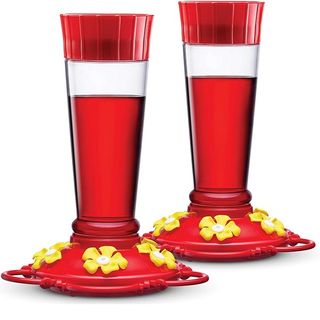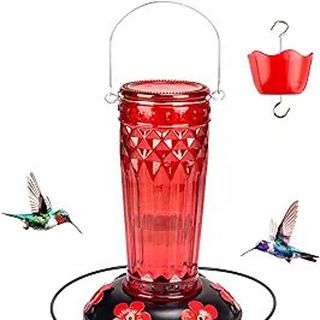How to stop other birds from using a hummingbird feeder
Other birds can contaminate hummingbird feeders and scare hummingbirds away – learn how to keep these unwanted guests away with our helpful tips
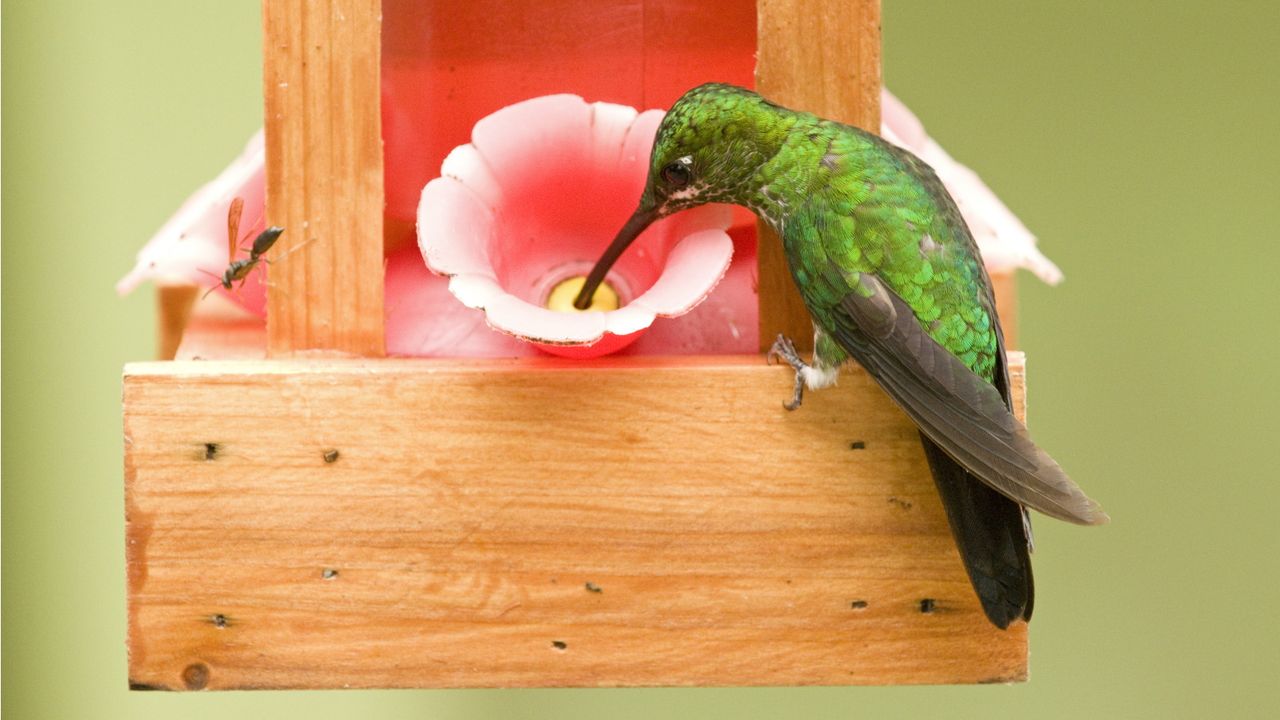

If you love having your yard filled with beautiful wildlife, there's no doubt you will have considered installing a hummingbird feeder.
However, these feeders can not only attract hummingbirds to your garden, but they can also allure the attention of other birds, which can sometimes be a problem.
When other feathered friends use the same feeder, it can prevent hummingbirds from using and visiting the feeder. But don't worry, to ensure beautiful hummingbirds keep coming back to your yard, we've asked experts on how to stop other birds from using a hummingbird feeder.
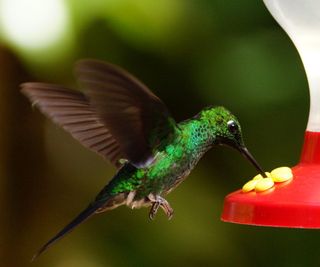
How to keep other birds away from your hummingbird feeder
'These feeders are specifically designed for the small size and feeding habits of hummingbirds,' explains says Autumn Hilliard-Knapp, houseplant expert from Perfect Plants.
The feeders typically have a long container that holds food that hummingbirds eat, like nectar, with small holes for hummingbirds to place their long beaks into to feed from. These are often brightly colored and with flower shapes to attract hummingbirds.

Autumn is a horticulture specialist and marketing professional at Perfect Plants Nursery. With four years of experience in the horticulture industry, she has developed a passion for helping people create beautiful indoor and outdoor spaces to enjoy. Her expertise in horticulture encompasses a broad range of activities, including plant care and selection, landscape design, and maintenance.
Why should you stop other birds using a hummingbird feeder?
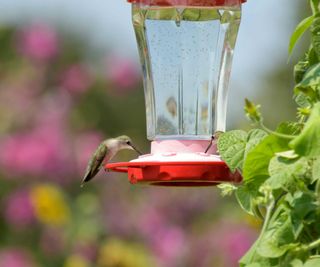
It's important to stop other birds from using a hummingbird feeder because it can impact the quality of the hummingbird food and how many of these birds actually use it.
'When larger birds, such as sparrows or finches, attempt to access the feeder, they can spill the nectar and potentially damage or break the delicate feeder,' says Autumn.
Hummingbirds feed on nectar, insects and sap, and often gardeners will make hummingbird food for hummingbird feeders or buy special bird food, like this hummingbird nectar from Amazon. This means that hummingbirds are unlikely to try feeding on regular natural bird feeders that contain things like fat balls, so they must have access to their specific hummingbird food if you want to attract these dazzling little birds to your yard.
'Hummingbirds, with their small size and delicate nature, may be intimidated or unable to compete with larger birds for access to the feeder which may prevent them from entering your yard,' says Paris Lalicata, head of plant education and community at The Sill.
Hummingbirds are some of the smallest of mature birds, only reaching around 5 inches in length. The presence of larger garden birds, such as starlings or blue tits, may scare away these little birds.
'Other birds may also contaminate the nectar in the feeder with their beaks or by dropping debris into the liquid and spoiled nectar can pose health risks to hummingbirds,' Paris adds.
How to stop other birds from using a hummingbird feeder
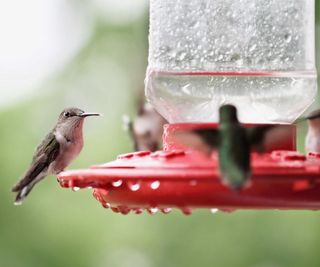
There are a few things you can do to discourage other birds from using hummingbird feeders in your garden.
'Position the feeder in a location that is easily accessible to hummingbirds but less accessible to larger birds,' suggests Paris. Knowing where to place a hummingbird feeder can be tricky but choosing a location that is only easy for these small birds to get to, such as among tree foliage, can discourage larger birds from going near it.
Another method and an obvious choice for lovers of all birds is to provide alternative food sources for the larger species. 'Offering other food sources, such as an orange or a jelly feeder, could help steer orioles or other nectar-loving species from your hummingbird feeder,' says Dr. Emma Greig, project leader of Project FeederWatch at Cornell Lab of Ornithology.
By learning where to hang bird feeders for other birds you should be able to keep unwanted guests dining at your hummingbird station.
You can also make it physically harder for other birds to use a hummingbird feeder with something like a baffle, like this clear baffle from Amazon, which creates a protective barrier. 'Install a baffle or cage around the feeder to prevent larger birds from accessing it. These barriers can be designed specifically for hummingbird feeders and are effective in keeping larger birds away,' says Autumn.
Shop hummingbird feeders
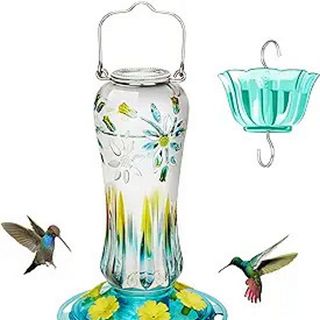
This beautiful glass hummingbird feeder has six feeding ports. It also has an ant moat to prevent ants reaching the nectar ports.
FAQs
How do you keep insects away from hummingbird feeders?
It's important to keep ants out of hummingbird feeders and to keep bees away from hummingbird feeders, among other insects, because they can contaminate the hummingbird food.
The best methods to keep insects away include regularly cleaning hummingbird feeders and providing other food and pollen sources for those insects, such as nectar-rich plants for pollinators.
You should try to discourage other birds from using a hummingbird feeder if you want to keep seeing these small feathered friends in your garden.
Make sure you also read up on hummingbird feeder mistakes and find out when to put out hummingbird feeders to effectively attract them to your yard.
Sign up to the Homes & Gardens newsletter
Design expertise in your inbox – from inspiring decorating ideas and beautiful celebrity homes to practical gardening advice and shopping round-ups.

Tenielle is a Gardens News Writer at Homes & Gardens. She holds a qualification in MA Magazine Journalism and has over six years of journalistic experience. Before coming to Homes & Gardens, Tenielle was in the editorial department at the Royal Horticultural Society and worked on The Garden magazine. As our in-house houseplant expert, Tenielle writes on a range of solutions to houseplant problems, as well as other 'how to' guides, inspiring garden projects, and the latest gardening news. When she isn't writing, Tenielle can be found propagating her ever-growing collection of indoor plants, helping others overcome common houseplant pests and diseases, volunteering at a local gardening club, and attending gardening workshops, like a composting masterclass.
-
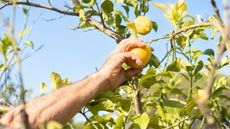 7 fruits to plant in April for years of tasty homegrown harvests, plus expert planting tips
7 fruits to plant in April for years of tasty homegrown harvests, plus expert planting tipsAn exceptional selection of fruit trees and soft fruit can be planted this month
By Drew Swainston Published
-
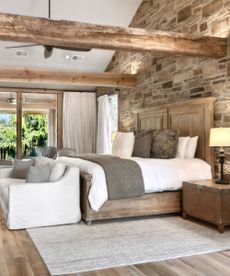 You can stay in the recording studio where Dolly Parton and Taylor Swift made their music – it's a modern-rustic hideout in a Tennessee forest
You can stay in the recording studio where Dolly Parton and Taylor Swift made their music – it's a modern-rustic hideout in a Tennessee forestDark Horse Estate, located in Franklin, Tennessee, is a haven for design and music lovers alike – we tour the beautiful estate (now on Airbnb)
By Hannah Ziegler Published
